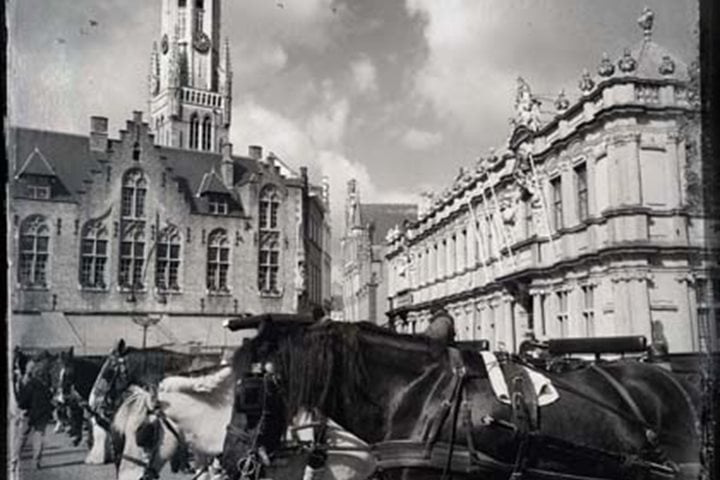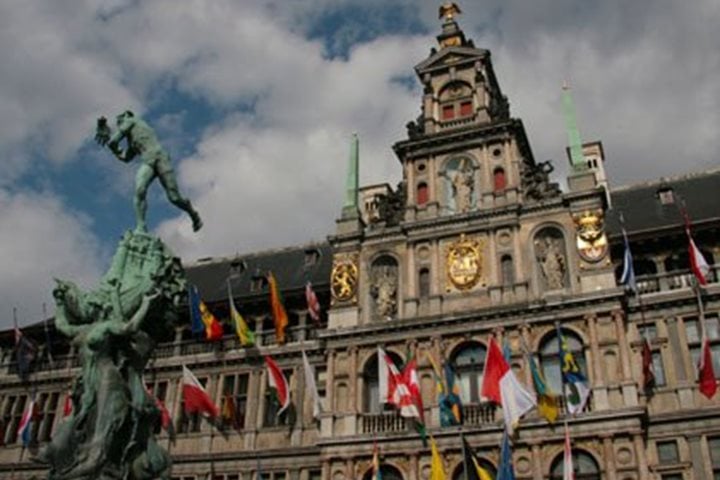Continuing our exploration of the coast of the Netherlands and the Wadden Sea we navigated southwesterly to approach Den Helder, the northernmost point on the North Holland Peninsula. Den Helder was a significant strategic location in various conflicts in the 18th and 19th centuries and now serves as the country’s largest naval installation. Later in the afternoon we sailed across the narrow passage to the island of Texel, the largest of the Frisian Islands in the UNESCO World Heritage site of The Wadden Sea. Texel, like most of the Netherlands, has been built up over the centuries to its present day size and has been a significant site both militarily and economically since the 14th century.
The morning began as we sailed into the port of Den Helder with the sun breaking over the flat and low lying Dutch landscape with purples, pinks, and dramatic shades of blue and gray and the characteristic billowing clouds of the countryside adding that component that so many Dutch masters captured in their paintings. Only the Den Helder lighthouse broke the horizon guiding our way into port. Here in this region of the Netherlands we would make the best use of our time in the Dutch countryside to visit and explore the iconic symbols of Dutch identity.
Even though this small country is the third most densely populated nation in the world, you wouldn't guess it when you set out in the sprawling pastoral landscape with its manicured waterways so crucial in keeping the ever-encroaching water from drowning this country, endless miles of agricultural goods, and of course the iconic tulip fields that have painted this landscape for centuries.
There were outings this morning to visit the fields of Siem Munster where our guests learned about the history and economy of the tulip trade that has so long captivated this nation. Another outing this morning took us to see and learn about the windmills, yet another icon of the Dutch landscape and such an integral component in maintaining the water level in the channels, as well as the prevalent contemporary wind turbines so crucial in providing clean power.
From a natural history perspective this region of the Netherlands harbors some of the most crucial and abundant habitat for migratory birds making their way from the African continent to Northern Europe and the high Arctic. The opportunity to spend the day watching the thousands of birds, both migrants in passage and breeding individuals, in the diverse habitats created by the Dutch made landscape is an extraordinary treat. In the morning a rather small but never the less enthusiastic group spent hours plying the wetlands and open dune systems around Den Helder observing and seeking out the various bird species. In just a few short hours we managed to see 67 species of birds, some rather common to this area but others less common or just more difficult to see. A highlight for all of us was to see the Lapwing up close and in great detail. Though a standard in the countryside and open areas of Europe this rather showy plover relative never ceases to impress with its iridescent colors and topknot crest and rich vocalizations. On a rarer note a pair of Little Stints were spotted resting on the sand bar from no doubt a long migratory flight. In the afternoon the group of birdwatchers swelled to a few dozen and we set out across the channel to Texel. This is truly a bird lover’s paradise and a rather robust community of birders has been flocking here for decades. Bird lover or not, one could hardly help but fall in love with this idyllic island and the quaint villages and landscapes. Another dozen species were added to the tally for the day’s birding as we scanned the thousands of feathered travelers utilizing the abundant habitat here.
This day was a complete taste of what makes the Netherlands and its manmade landscape so special. Perhaps we'll be able to recall some of the special moments from this more pastoral setting as we make our way to the metropolis of Amsterdam.







